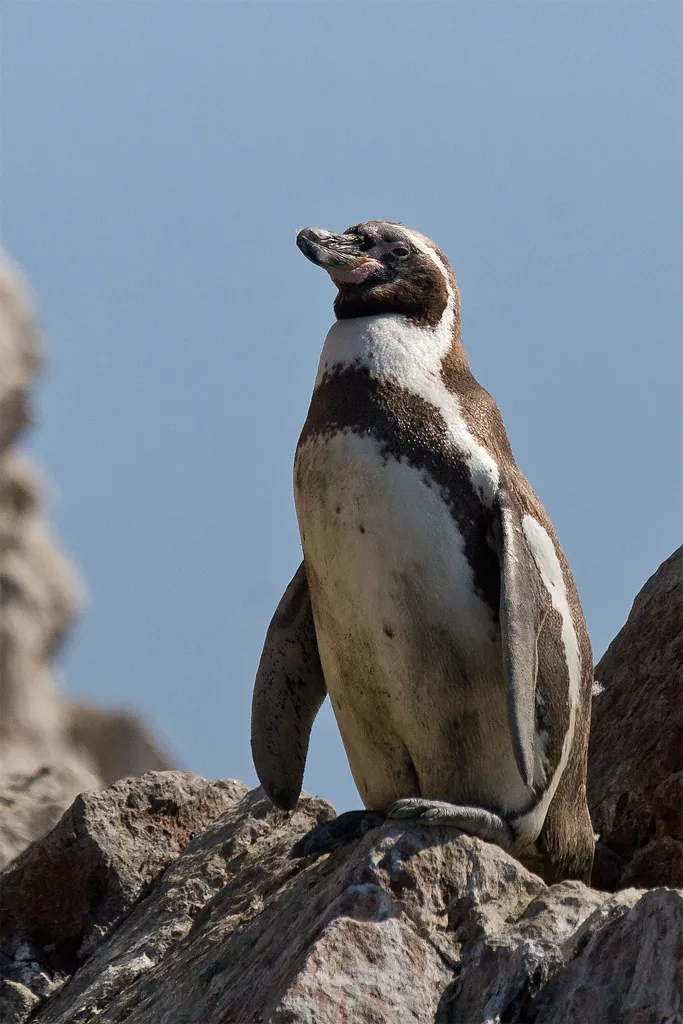We read stories about how rare and endangered animals gets pushed away in order to let people make money from their habitat, but once in a while the animals win! And this is exactly what happened when a $2.5 billion mining project clashed with the wildlife in the Coquimbo region in central Chile.
The large-scale mining operation wanted to spend several billion dollars to create new infrastructure such as a new harbor, as well as building houses and operation facilities next to the mining area. This project was obviously pretty controversial from the beginning, seeing as it would affect a huge area with a lot of rare wildlife, including the vulnerable Humboldt Penguins (Spheniscus humboldti).

A Humboldt Penguin. Image by Adam Kumiszcza, posted with the Creative Commons Attribution-Share Alike 3.0 Unported license.
Why we should care about the Humboldt Penguin
We often get questions why we should care about specific animals when there is a conflict of interest between humans and the animals, and I’m simply one of the people who believe we should take care of every single species on the planet; preferably in their own habitat. The Humboldt Penguin is only found in Chile and Peru, and the population is estimated to be between 3,300 and 12,000 individuals. This is obviously a pretty uncertain number, but even if the 12,000 number is the correct one, then destroying a single breeding ground can affect the entire population. Due to their low and declining numbers, the Humboldt Penguin are protected as “Vulnerable” by the IUCN, as well as having been granted protection under the “U.S. Endangered Species Act”.
The Humboldt Penguin are also pretty cool birds. If you remember a few years back when two male penguins raised an egg and a check as their own, then you have already heard about this penguin species. Not only did two male Humboldt Penguin raise a chick in 2009 in Bremerhaven Zoo, another pair did the same thing in Wingham Wildlife Park in 2014. They have also had some more media attention back in 2012 when a penguin escaped from Tokyo Zoo and lived in the Tokyo Bay for 82 days. The escaped penguin was eventually captured again, so we don't have a small Humboldt Penguin population in Japan.
One of the most important breeding sites for the Humboldt Penguins is just of the coast of the proposed mining area
One of the biggest argument that conservationists used against the proposed mining area was the Humboldt Penguins Reserve located just a short distance of the coast of mainland Coquimbo. This reserve is extremely important for the breeding pairs, and many people think that the breeding success of the penguins would be severely affected by the mining area.
I could not find any numbers about how many of the penguins that uses this area as a breeding ground, except for information that it was “a lot”. Therefore it is pretty difficult for me to make any statements about the importance of this area, but seeing as the government officials decided that it was worth protection, then we can assume that it is very important for the penguins.
The reserve also houses bottlenose dolphins, sea turtles, sea lions, albatrosses, many different fish species, and a few whale species. Many of these are vulnerable to extinction, or even threatened by it, so this mining operation could end up giving many different species problems.
For once it seemed that the Chilean government agreed with the protesters, and Chile's Ministers' Committee decided to reject the plans for the big mining operation by placing a veto against it. This is great news for the penguins and other animals in the area, but will cost Chile over 12 million tonnes of iron and 150,000 tonnes of copper each year, so it is nice to see that greed was prioritized below the wildlife.
We often see that even threatened or vulnerable animal species have to deal with loss of habitat when humans want to use it for something else, so it is refreshing to see that the politicians for once decided to take care of the wildlife instead of filling the pockets of the mine operators.
Read more by @valth: Only two Adélie penguin chicks on Terre Adélie survived to adulthood this year, despite having over 18,000 breeding pairs.
Thanks for reading
About the author
Hi, I’m @valth! I live in Norway with my wife, our baby, and our two dogs; one of which is seen wearing a bow tie in the profile picture!
I am very passionate about nature and biology, and have been studying ecology for a few years now. My passions are mostly within conservation biology, mycology (the studies of mushrooms), botany, animal behavior and general microbiology. I really enjoy both the theoretical aspect, as well as the more practical aspect of biology, and I spend about as much time in front of biology textbooks as I do spend on finding and identifying plant, mushroom and animal species in the forests.